Seven in Ten Americans Identify as Christian
Report on American Religious Landscape in 2020
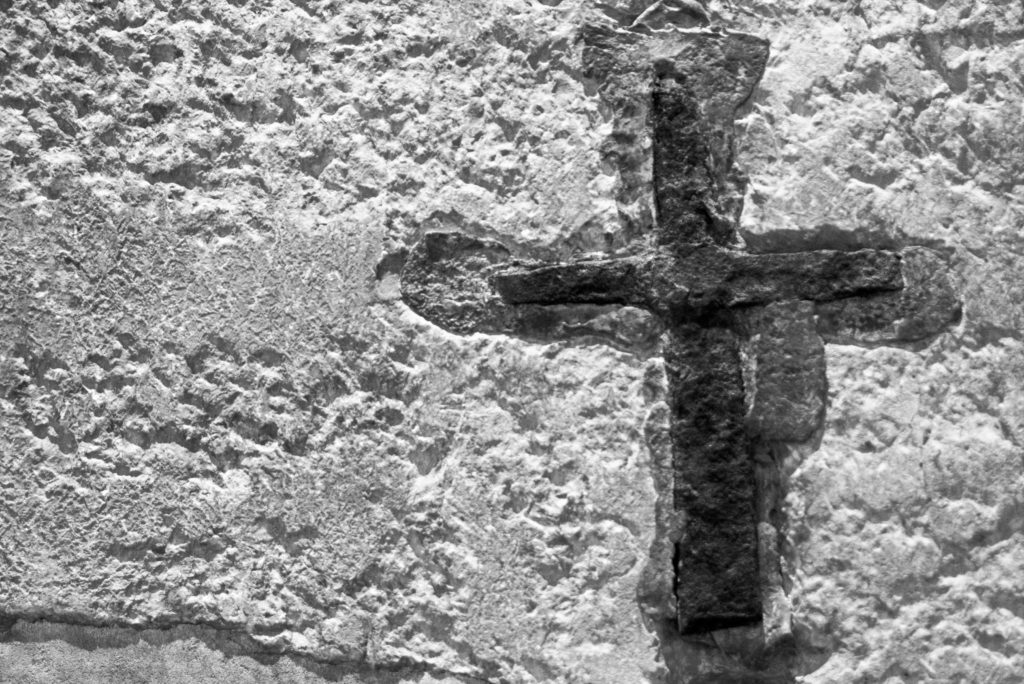
Seven in ten Americans (70%) identify as Christian, including more than four in ten who identify as white Christian and more than one-quarter who identify as Christian of color. Nearly one in four Americans (23%) are religiously unaffiliated, and 5% identify with non-Christian religions.
This is according to a newly released report by PRRI.
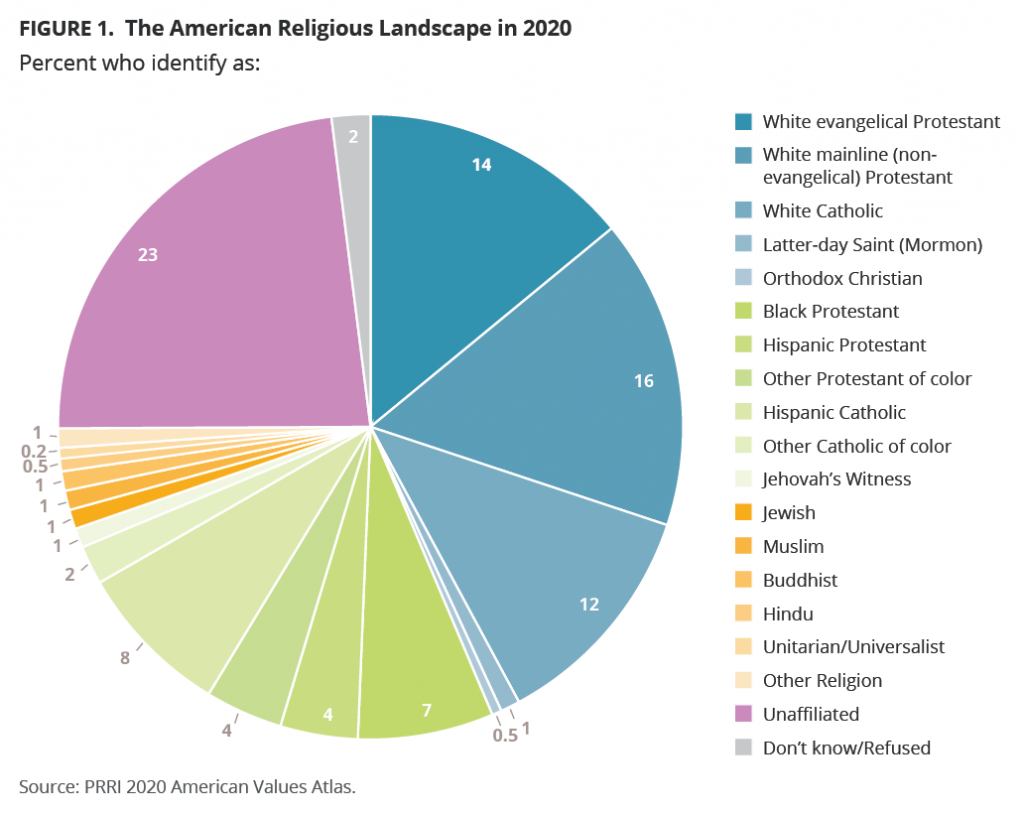
The most substantial cultural and political divides are between white Christians and Christians of color. More than four in ten Americans (44%) identify as white Christian, including white evangelical Protestants (14%), white mainline (non-evangelical) Protestants (16%), and white Catholics (12%), as well as small percentages who identify as Latter-day Saint (Mormon), Jehovah’s Witness, and Orthodox Christian. Christians of color include Hispanic Catholics (8%), Black Protestants (7%), Hispanic Protestants (4%), other Protestants of color (4%), and other Catholics of color (2%)[3]. The rest of the religiously affiliated Americans belong to non-Christian groups, including 1% who are Jewish, 1% Muslim, 1% Buddhist, 0.5% Hindu, and 1% who identify with other religions. Religiously unaffiliated Americans comprise those who do not claim any particular religious affiliation (17%) and those who identify as atheist (3%) or agnostic (3%).
The Decline of White Christian America Slows
Over the last few decades, the proportion of the U.S. population that is white Christian has declined by nearly one-third. As recently as 1996, almost two-thirds of Americans (65%) identified as white and Christian. By 2006, that had declined to 54%, and by 2017 it was down to 43%[4]. The proportion of white Christians hit a low point in 2018, at 42%, and rebounded slightly in 2019 and 2020, to 44%. That tick upward indicates the decline is slowing from its pace of losing roughly 11% per decade.
The slight increase in white Christians between 2018 and 2020 was driven primarily by an uptick in the proportion of white mainline (non-evangelical) Protestants and a stabilization in the proportion of white Catholics. Since 2007, white mainline (non-evangelical) Protestants have declined from 19% of the population to a low of 13% in 2016, but the last three years have seen small but steady increases, up to 16% in 2020. White Catholics have also declined from a high point of 16% of the population in 2008, and their low point of 11% occurred in 2018. It is unclear if the bump back up to 12% in 2020 indicates a new trend.
Since 2006, white evangelical Protestants have experienced the most precipitous drop in affiliation, shrinking from 23% of Americans in 2006 to 14% in 2020. That proportion has generally held steady since 2017 (15% in 2017, 2018, and 2019).
The Rise of the “Nones” Slows
Disaffiliating white Christians have fueled the growth of the religiously unaffiliated during this period. Only 16% of Americans reported being religiously unaffiliated in 2007; this proportion rose to 19% by 2012, and then gained roughly a percentage point each year from 2012 to 2017. Reflecting the patterns above, the proportion of religiously unaffiliated Americans hit a high point of 26% in 2018 but has since slightly declined, to 23% in 2020.
The increase in the proportion of religiously unaffiliated Americans has occurred across all age groups but has been most pronounced among young Americans. In 1986, only 10% of those ages 18–29 identified as religiously unaffiliated. In 2016, that number had increased to 38%, and declined slightly in 2020, to 36%.
Stability Among Christians of Color and Non-Christian Religious Groups
In 2020, around one in four Americans were Christians of color (26%). This share is relatively similar compared to that in 2016 (25%) and has grown only slightly since 2006 (23%). Individual groups of Christians of color, including Black Protestants, Hispanic Protestants, Hispanic Catholics, Black Catholics, Asian American and Pacific Islander (AAPI) Christians, multiracial Christians, and Native American Christians, have shifted by single percentage points between 2006 and 2020.
The share of non-Christian religious groups has also remained steady between 2020 (4%), 2016 (4%), and 2006 (5%). No non-Christian religious group has grown or declined significantly in size since 2006.
Young Americans Are More Religiously Diverse
Americans ages 18–29 are the most religiously diverse age group. Although a majority (54%) are Christian, only 28% are white Christians (including 12% who are white mainline Protestants, 8% who are white Catholics, and 7% who are white evangelical Protestants), while 26% are Christians of color (including 9% who are Hispanic Catholics, 5% who are Hispanic Protestants, 5% who are Black Protestants, 2% who are multiracial Christians, 2% who are AAPI Christians, and 1% who are Native American Christians). More than one-third of young Americans (36%) are religiously unaffiliated, and the remainder is Jewish (2%), Muslim (2%), Buddhist (1%), Hindu (1%), or another religion (1%).
The proportion of white Christians increases proportionally as age increases. Among those ages 30–49, 41% are white Christian, as are half of those ages 50–64 (50%) and a majority of Americans 65 and older (59%). These increases are offset by sharp declines in the proportion of religiously unaffiliated Americans in each age group. While more than one-third of Americans under the age of 30 are religiously unaffiliated (36%), that proportion drops to one in four (25%) among those ages 30–49, to 18% among those aged 50–64, and to only 14% among those ages 65 and older.
The proportions of Christians of color and non-Christian religious people feature more modest shifts. While the numbers are small, African American Protestants makeup 8% of Americans ages 65 and older but only 5% of Americans under the age of 30. By contrast, the proportions of Hispanic Protestants, Hispanic Catholics, and adherents to other world religions are significantly higher among younger Americans than among people over 65.
Americans ages 65 and older are the only group whose religious profile has changed significantly since 2013. Among Americans 65 and older, the proportion of white evangelical Protestants dropped from 26% in 2013 to 22% in 2020, and the proportion of white Catholics dropped from 18% in 2013 to 15% in 2020. By contrast, the proportion of religiously unaffiliated seniors increased from 11% in 2013 to 14% in 2020.
White Evangelical Protestants are the Oldest Religious Group
White evangelical Protestants are the oldest religious group in the U.S., with a median age of 56, compared to the median age in the country of 47. White Catholics and Unitarian Universalists have median ages of 54 and 53 years old, respectively. Black Protestants and white mainline Protestants have a median age of 50. All other groups have median ages below 50: Jehovah’s Witnesses (49), Jewish Americans (48), Latter-day Saints (47), Orthodox Christians (42), Hispanic Catholics (42), Hispanic Protestants (39), religiously unaffiliated people (38), Buddhists (36), Hindus (36), and Muslims (33). In the youngest groups, one-third of Hindu (33%) and Buddhist (34%) Americans and 42% of Muslim Americans are in the 18–29 age category.
Related
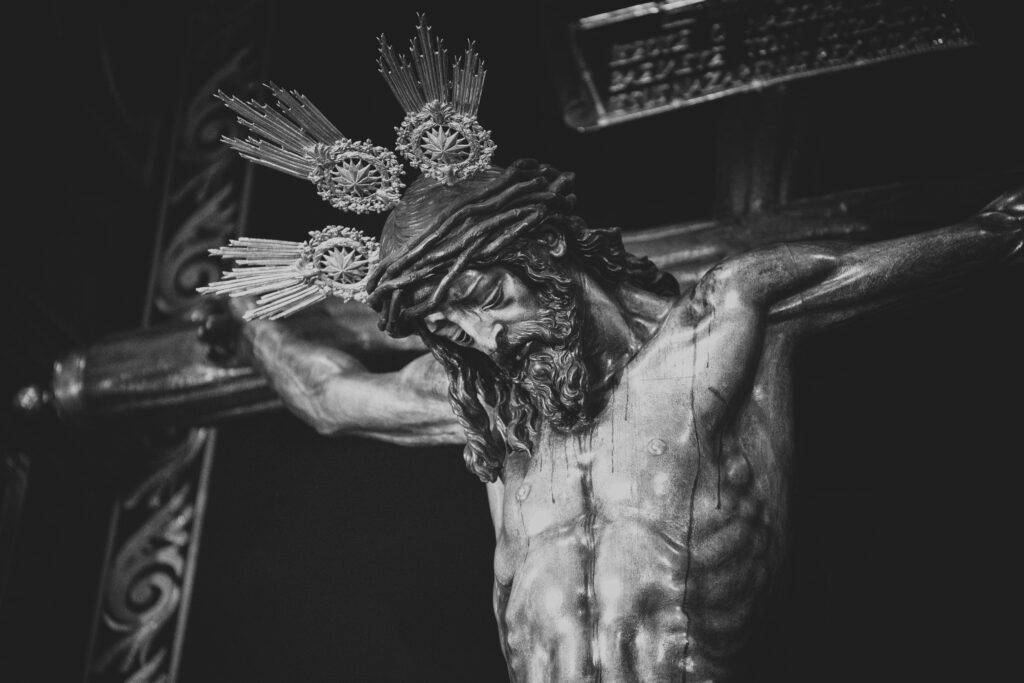
Dying to Self, Being Born to Love
Luis Herrera Campo
09 April, 2025
2 min

Easter or Nothing: The Heart of the Christian Faith
Luis Herrera Campo
08 April, 2025
2 min
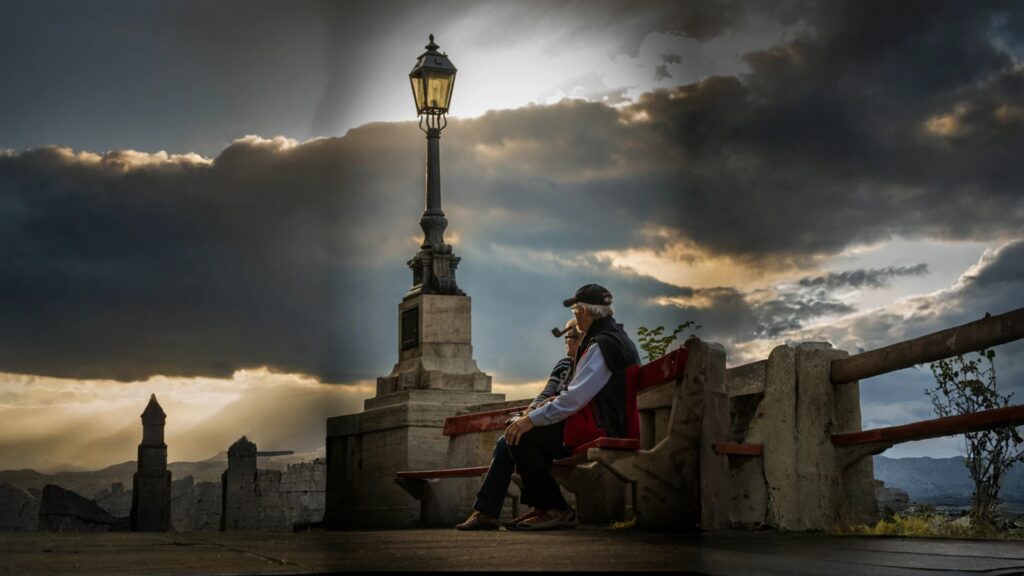
Why are long-lasting couples happy?
Exaudi Staff
08 April, 2025
3 min
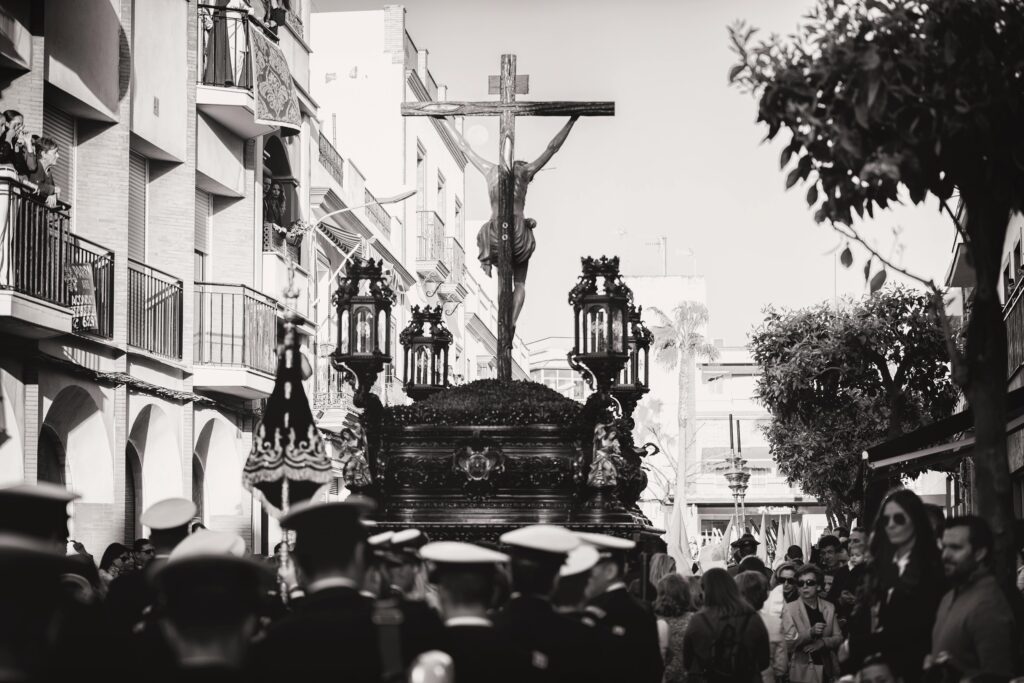
The Tradition of Holy Week Processions: A Link between Faith, Community, and Culture
Exaudi Staff
07 April, 2025
3 min
 (EN)
(EN)
 (ES)
(ES)
 (IT)
(IT)

